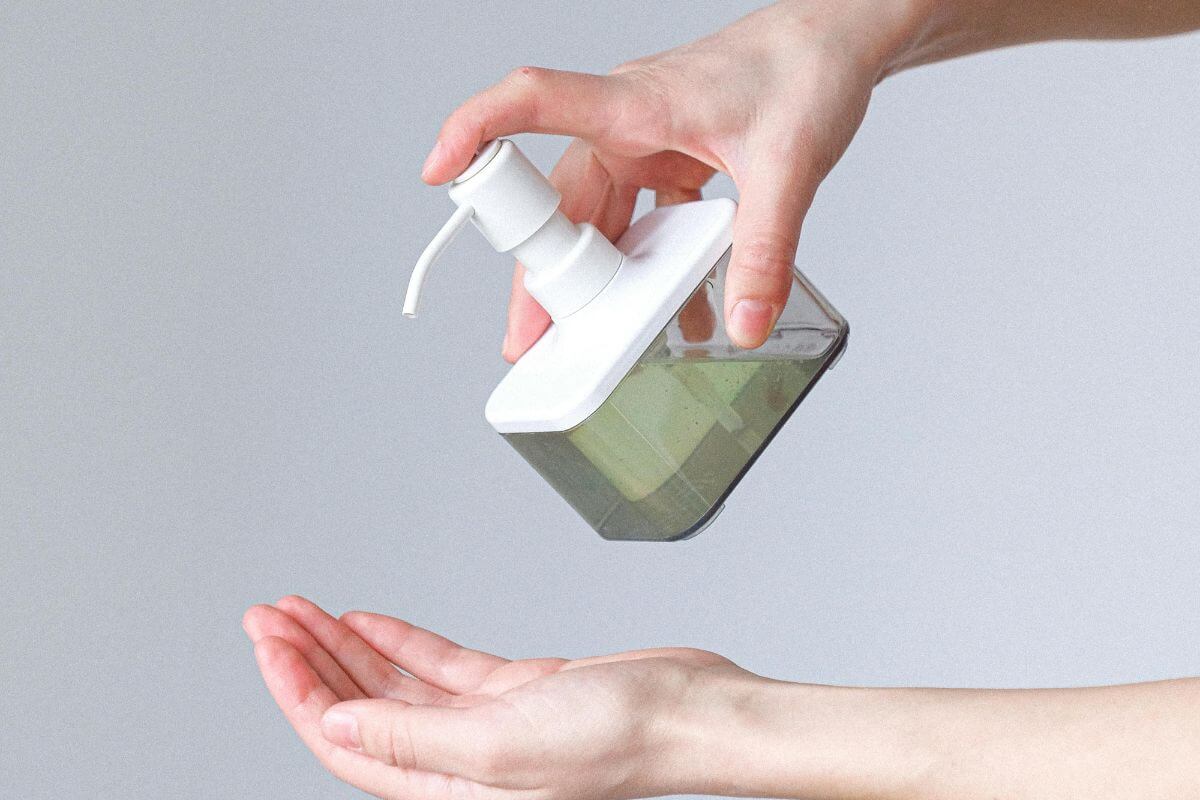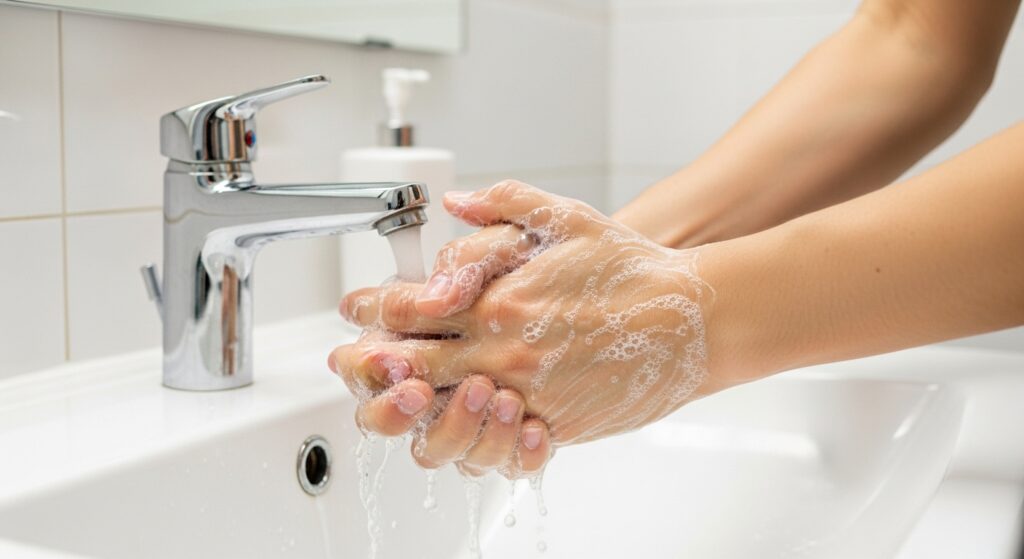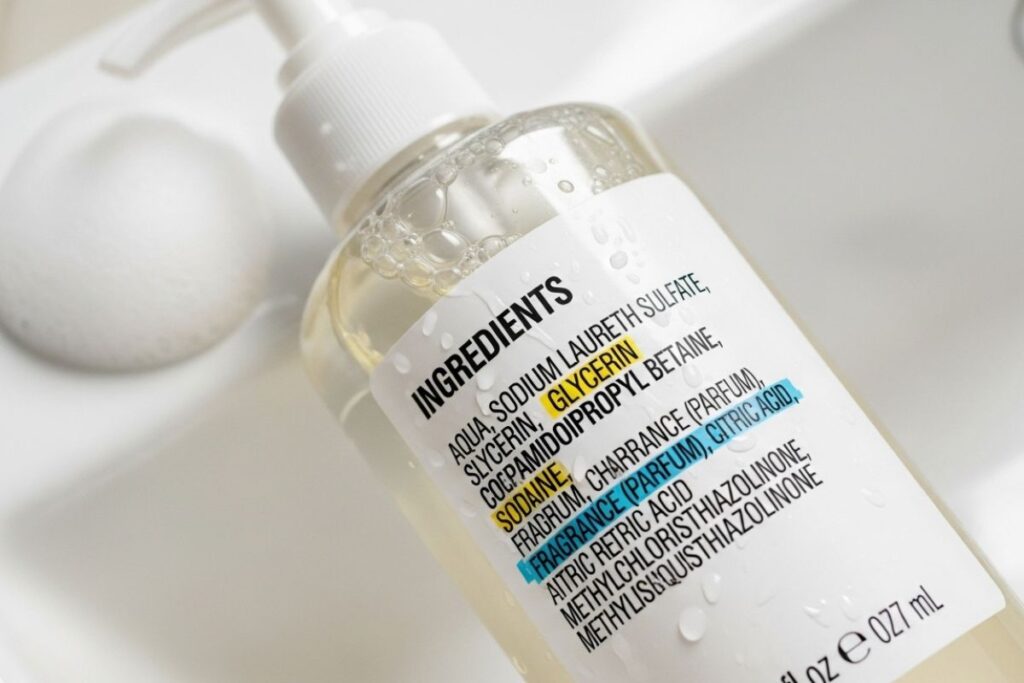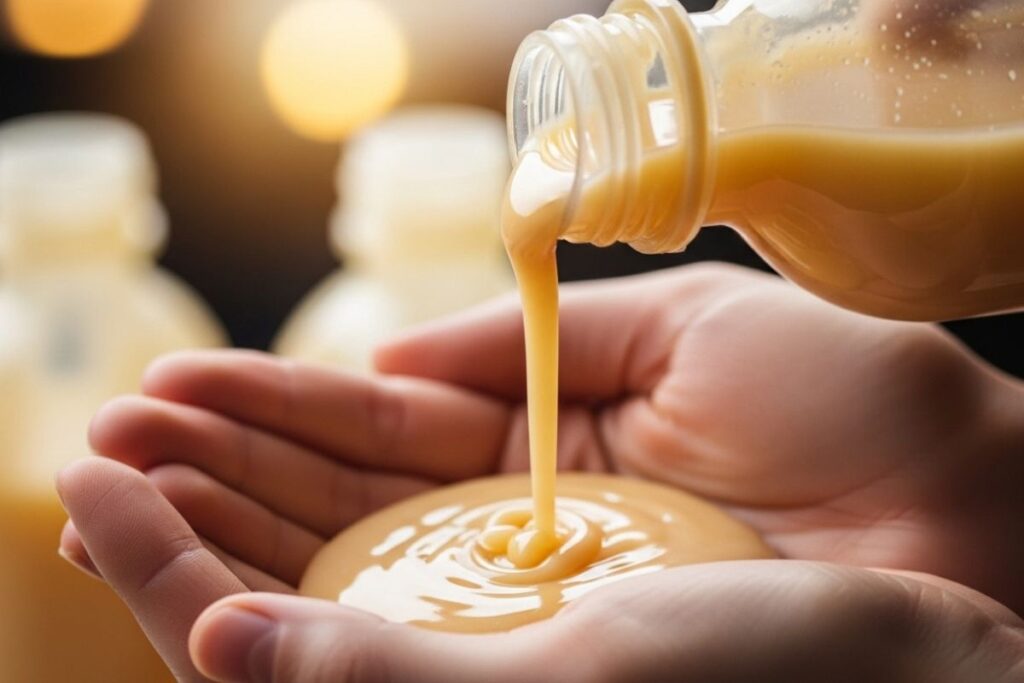

As a fifth-generation beekeeper and founder of Sweet Comb Chicago, I’ve always been conscious of what goes into the products we use daily. My journey to transition from antibacterial to natural hand soap wasn’t just business-motivated; it was personal. After years of using conventional antibacterial soaps, I noticed my hands becoming increasingly dry and irritated.
That’s when I began researching alternatives and discovered some surprising truths about the soaps most of us use without a second thought. The transition from antibacterial to natural hand soap changed not only my skin’s health but also aligned perfectly with my environmental values.
The FDA has determined that antibacterial soaps are not more beneficial than regular soap and water, a fact that a substantial number of individuals are unaware of. This revelation came after years of marketing convinced us that “antibacterial” meant “better protection”.
The bad chemicals in these soaps, especially triclosan and triclocarban, have been linked to hormone disruption and may play a part in the development of antibiotic resistance. The FDA banned these ingredients from over-the-counter consumer antiseptic wash products in 2016.
Perhaps most troubling is the false sense of security these products create. Many consumers believe antibacterial soaps provide superior protection against illness, when scientific evidence doesn’t support this claim.
Soap molecules have a dual nature. One end attracts water while the other attracts oil and dirt. When you wash your hands, soap doesn’t need to “kill” bacteria to be effective. Instead, it works by breaking surface tension and creating a mechanical action that lifts away dirt, oil, and microbes, which are then rinsed away with water.
This mechanical cleansing action is what makes handwashing effective, not antibacterial properties. Regular natural soap performs this function perfectly well without added chemicals.

The CDC recommends gentle hand cleansing for at least 20 seconds with soap and water. This duration, combined with proper technique, is what removes harmful microorganisms.
Studies show that handwashing with soap reduces diarrhea deaths by 50%, according to Allied Market Research. Regular soap does not require antibacterial ingredients, which is an impressive statistic.
The key takeaway? It’s the act of thorough handwashing, not special antibacterial ingredients, that keeps us healthy.
Many people believe natural soaps can’t clean as effectively as their antibacterial counterparts. This simply isn’t true.
Natural soaps clean through the same mechanism as any other soap by lifting away dirt and microbes. The ability to clean comes from the structure of the soap molecules, not from chemicals that are added.
Another common misconception is that bar soaps harbor bacteria. Research has shown that while bacteria may be present on the surface of bar soap, they don’t transfer to hands during washing.
The alkaline nature of soap creates an environment hostile to bacterial growth. When you wash with bar soap, any surface bacteria are washed away in the lathering process.
While natural soaps may cost slightly more upfront, they often last longer than liquid alternatives because they’re more concentrated and don’t contain fillers.
Natural soaps may be more affordable due to their gentler formulation, potential health and environmental advantages, and decreased need for separate moisturizers.
When transitioning to natural hand soap, certain ingredients signal quality and effectiveness:
When shopping for natural hand soap, be wary of these red flags:
These ingredients can cause skin irritation and may have other health concerns associated with long-term use.

Making the switch to natural hand soap offers numerous advantages beyond just clean hands.
Within just two weeks of switching to sustainable soap options, I noticed my hands were less dry, and the persistent redness around my knuckles began to fade.
By the one-month mark, the chronic dryness I’d experienced for years had virtually disappeared. One minor but significant improvement in my life was that I no longer needed to apply hand cream multiple times a day.
Most surprisingly, the minor eczema flare-ups I occasionally experienced between my fingers stopped completely. My skin’s natural barrier had begun to repair itself once I stopped stripping it with harsh detergents.
You don’t have to switch to natural hand soap right away. Here’s a practical approach based on my experience:

Children often resist change, especially with products that have different scents or textures:
At Sweet Comb Chicago, we developed our natural body bar soap for effective, gentle cleansing without harsh chemicals:
After transitioning to natural soap, a few simple practices can maximize the benefits:
Healthy skin is your body’s first defense against pathogens. By treating it gently with natural products, you’re supporting your overall health. Key benefits of switching to natural hand soap:
If you’re considering making the switch, I encourage you to try our natural body care products at Sweet Comb Chicago. Our Bee Clean Body Bar offers effective cleansing with ingredients that respect your skin’s natural balance because we at Sweet Comb Chicago believe that what you wash is just as important as actually cleaning it.

Founder of Sweet Comb Chicago
